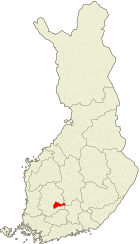Finman
Queen Bee
- Joined
- Nov 8, 2008
- Messages
- 27,887
- Reaction score
- 2,023
- Location
- Finland, Helsinki
- Hive Type
- Langstroth
Because what Derekm is over-looking, with his mythical warm and co
By making hives from Kingspan, a completely artifical environment is being created which mirrors those environmental conditions which are valued by human beings. It may be a very clever thing to be doing, but perhaps not particularly wise ?
LJ
Kingspan as hive material in very unpractical and very expencive.
Couple weeks ago I bought new medium polyboxes 10 euros a piece.
Their insulation is good enough to bring colonies over winter with one feeding= 8 months.
Dekemns stories about winter food consumptiona are not true at all. Colonies cannot live with couple of sugar kilos several months like he says.
Those 2 hive owners who says " I do not use insulation" tells only that they not understand what they are talking.





